Epidermolysis bullosa
7. Therapeutic wound care products and modes of use
The healing product of excellence are dressings, whose function is to help maintain the ideal environment for natural wound healing. There are some characteristics that will make us choose the most suitable dressings for EB wounds: they do not adhere to the wound bed or the surrounding skin, they do not cause pain on removal, they have sufficient absorption to avoid the need for frequent dressing changes, are comfortable and stay in place, are readily available, and are available in a variety of sizes and shapes, with the ability to be trimmed.
TYPES OF PRODUCTS
It is important to know the main types of generic products in order to understand their use. These can be classified according to their presentation or structure (plate or dressing type, mesh or tape type, and amorphous type: gel, cream, or granules), according to their function, and according to their composition. In patients with EB, it is essential to always choose products that do not have an adhesive and whose application and removal is gentle and respectful of the skin.
There are products that can serve us, depending on their function, for each of the different phases of TIME: cleaners, debriders, antimicrobials, absorbents, moisturizers, protectors, stimulators of healthy tissue growth, etc. The main products used in EB wounds are listed below according to their composition:
Hydrogels. They add moisture to dry wounds and are used for autolytic debridement. They are usually applied as gels or creams, although they may be available in solid gel-type dressings. It is important to differentiate hydrogels from vaseline, which is a non-moisturizing lubricating product. Vaseline can be used in cases where the optimal material is not available to lubricate dry gauzes and that do not adhere to wounds, to facilitate the removal of scabs or dry skin, etc.
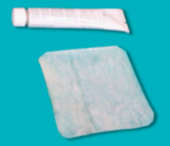
Tulle or mesh. They are the main primary dressings that generate a protective layer or "second skin" when applied to wounds. They are not absorbent, but protect against friction, pressure and adhesives. They are usually made of silicone or soft products; they usually adapt well to all body shapes. We must monitor the size of the holes in the mesh, because sometimes they can leave marks on the wounds.
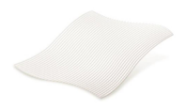
Foams. Absorbent dressings that cushion and protect areas exposed to pressure or friction. Can be a secondary dressing.
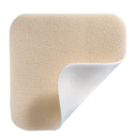
Absorbent fibers. Highly absorbent dressings. In some cases they can remain attached to the skin, so it is important to protect it with primary dressings.
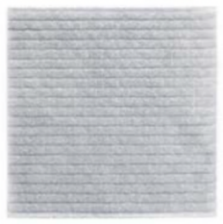
Polymeric membranes. They are a type of dressing widely used in patients with EB, very absorbent and with a cleaning component inside. They usually have a very debriding effect on wounds, so it is indicated when there are highly contaminated wounds that do not improve, as well as in painful wounds, since it has an osmotic effect and a cushioning thickness that helps manage pain. The first days of its use can increase the amount of exudate from the wounds, as well as provide a different smell.
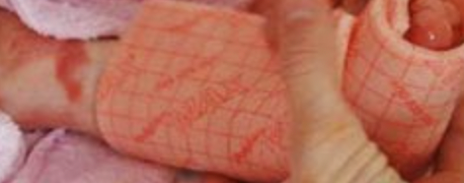
Active carbon. It is a component that can be included in dressings of different compositions, helping to neutralize the odor of wounds. If it is combined in absorbent dressings or with silver, it can be a good option in infected or tumor wounds.
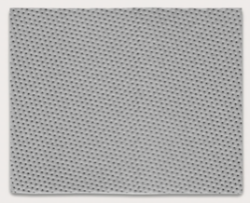
- Silver. Silver is an antimicrobial compound that can be incorporated into products with different characteristics (mesh, foam, absorbent fibers, etc.). It should be used with caution for short periods of time, monitoring the appearance of allergic reactions and resistance to microorganisms.
- Specific cleaners. Decontaminating and debriding products that are used especially in highly contaminated or dirty injuries.
- Other products: collagen, hyaluronic acid, decontaminating meshes, etc. All products, especially those applied in topical cream format, should be recommended by a healthcare professional. It is recommended to apply the creams using sterile syringes or with clean hands. It is important to store the tubes of creams well covered and in clean areas to avoid the growth of microorganisms inside.
Currently, mixed products are very common, which have a combination of the above components and others (i.e., honey, iodine, enzymatic agents, etc.). There are numerous commercial brands for the same types of products, so it is important to follow the recommendations of the professionals of reference and be guided by the resources available in our environment. It may be that at some point someone recommends the use of a new product or the caregiver discovers a product that they wants to try. This should always be communicated to the medical team. We must bear in mind that no product usually generates an "immediate effect" on the wound, so it is usually necessary to use it in several cures to be able to assess its effect.
PRODUCT SELECTION
The choice of dressing will be guided by the referencenurse, but there are many daily moments in which the caregiver and/or the person with EB will be able to make decisions about what type of dressing the wound needs at that moment, taking into account their availability and price, their tolerance and what change needs exist. Since there is a wide range on the market, it is recommended to choose those dressings that offer several benefits and avoid combining many dressings in the same dressing and wound.
DRESSING APPLICATION
It is important that the dressing covers the entire wound, leaving about 1-2 cm of dressing outside the wound (beyond the edge of the wound). If there are several wounds nearby, as long as there are no signs of infection in one of them (in this case, it would have to be treated individually to avoid passing contamination from one to another), we should attempt to cover them with the same dressing.
If very large dressings are not available, it is recommended to put one dressing on top of the other to prevent friction between the edges from creating new friction wounds.
We must ensure that the dressings are well secured to prevent them from slipping, because this could damage the fragile skin or, if part of the wound remains uncovered, it could adhere to clothing or bedding. Lastly, when fastening dressings, it is important to allow as much free movement as possible for the person to avoid contractures from subsequent scarring (especially in patients with recessive dystrophic epidermolysis bullosa).